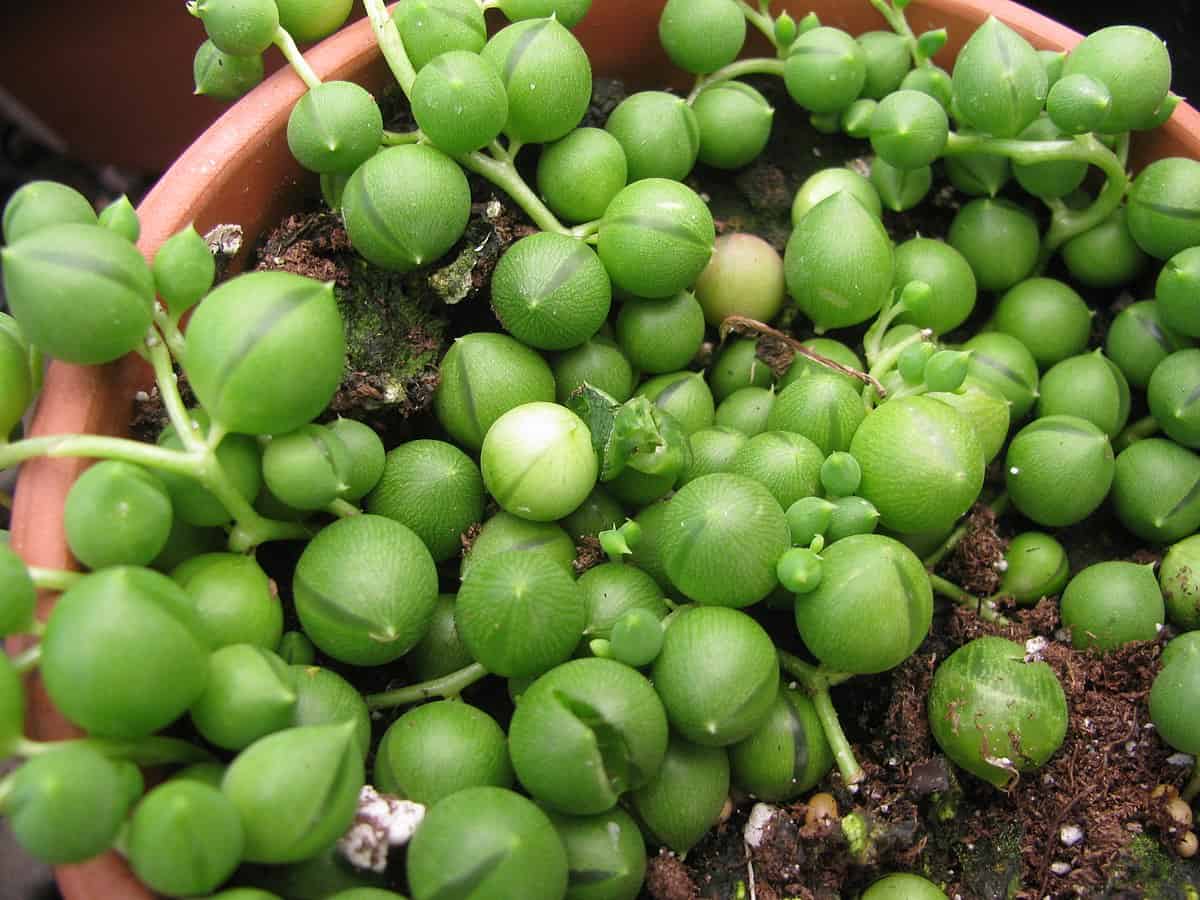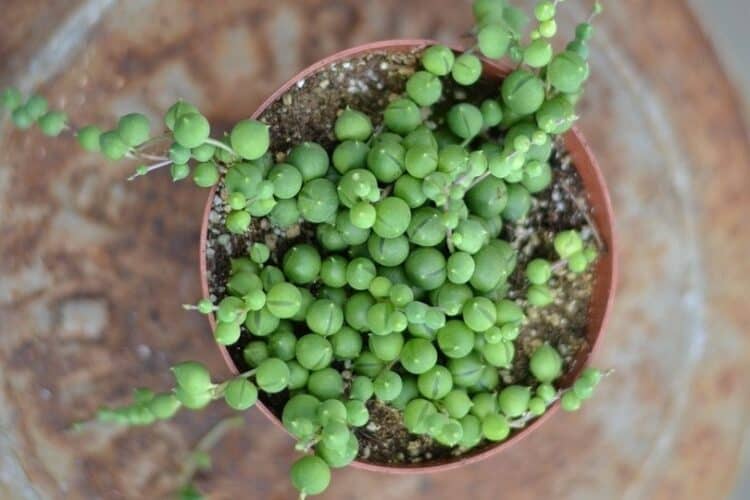The string of pearls is a beautiful cascading succulent plant that is toxic to cats if ingested or the sap meets their sensitive skin.
Most cat owners are familiar with succulent plants being potentially toxic to cats, so if you are looking to grow this plant with your cat or if your cat has already nibbled on this plant and you want to know the severity of toxicity of this plant, then this article will give you the answers and reassurance you need.
Can Cats Eat String Of Pearls?
No, cats should not eat the string of pearls succulent plant (Curio rowleyanus) because the plant’s sap is toxic when ingested, according to the ASPCA’s toxic succulent list.
This attractive plant is commonly grown in hanging flowerpots due to the cascading nature of the string of pearls stems, which makes it more challenging for cats to eat, however, if you grow this plant out of pots or leave it to run through your flower beds, your cat will have easier access to eat this plant and suffer from minor poisoning. It is important to note that cats should not be eating plants as part of their diet, since they are obligate carnivores that thrive on a protein-rich diet.
All parts of the string of pearls succulents are toxic to cats and can cause potential liver failure if consumed in large quantities frequently. However, most cats will not willingly eat this plant because it does not taste nice.
Most cats are curious, so they will inevitably take a nibble of plants that are growing in your garden or home. Which makes it important to ensure that you only grow plants that are safe for your cat in their environment.

What Happens If a Cat Eats String Of Pearls?
If your cat has eaten part of the string of pearls plant, it is important to take them to the veterinarian immediately—even if they are not showing any symptoms. If your cat eats a small piece of this plant, then it will usually only suffer from minor poisoning.
The main toxic principle to string of pearls’ sap is the pyrrolizidine alkaloids which inhibit the cell division process in the liver, ultimately leading to liver failure, especially in cats who already have a compromised liver.
Some common symptoms of a cat suffering from poisoning from the string of pearls plant will include:
- Excessive drooling
- Lethargy
- Vomiting
- Diarrhea
- Gastrointestinal discomfort
The side effects your cat will experience after eating this plant are uncomfortable, and a veterinarian can help ease the discomfort and administer the right medications to prevent the sap from being absorbed into the liver.
Final Thoughts
It is not common for a cat to die from eating a small portion of the string of pearls plant, but they should still be taken to a veterinarian if you suspect that they have consumed this plant. It will also be helpful to bring a sample of the plant with you to your veterinarian so that diagnosis and treatment can be prompt.
Although the string of pearls is a beautiful succulent that is easy to propagate and grow, it is best to not grow this plant in the same environment as cats because it is toxic once ingested. There are many other safe succulents that you can grow that will not harm your cat.
Featured Image Credit: Pixabay














